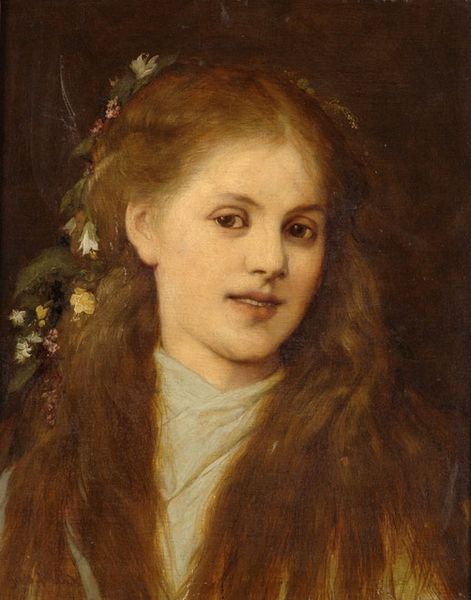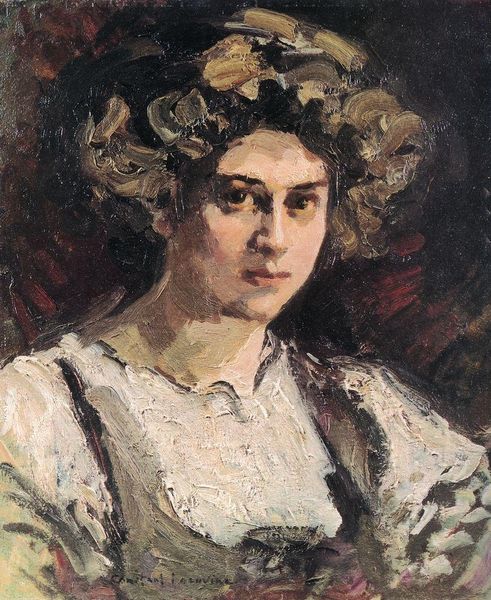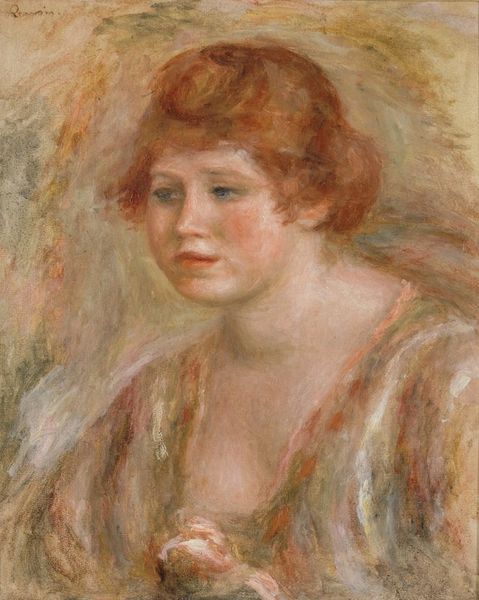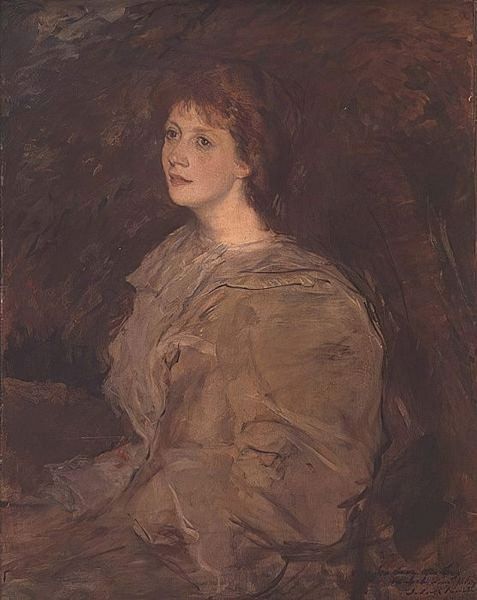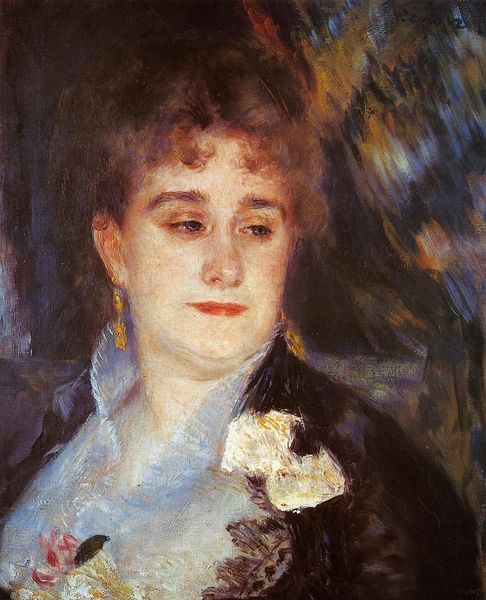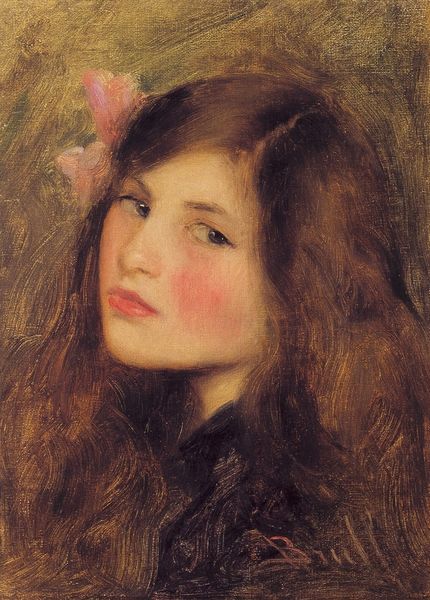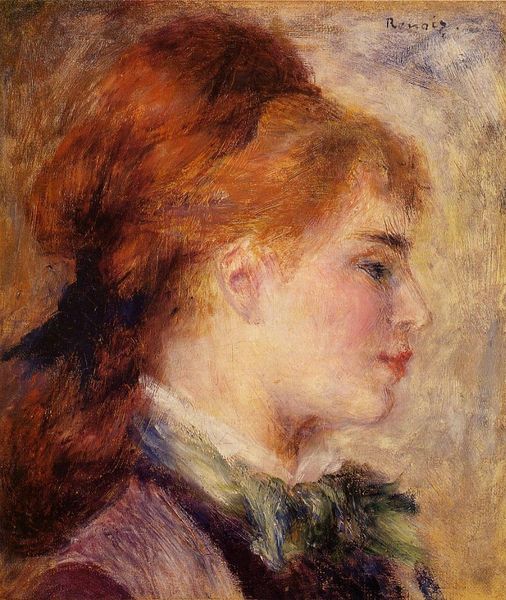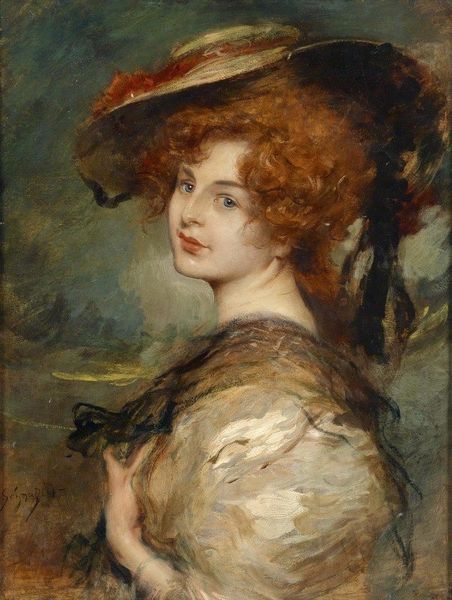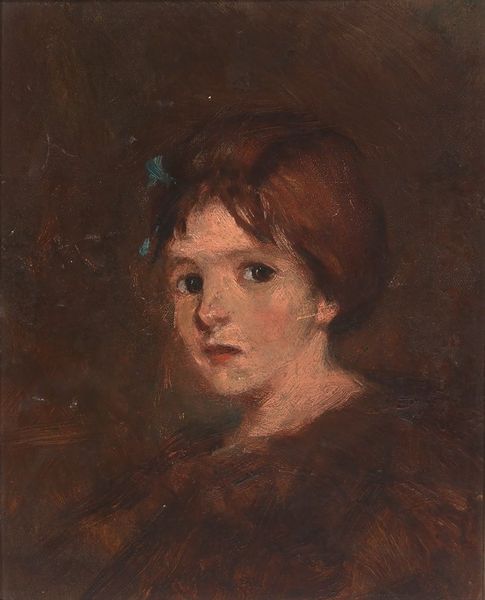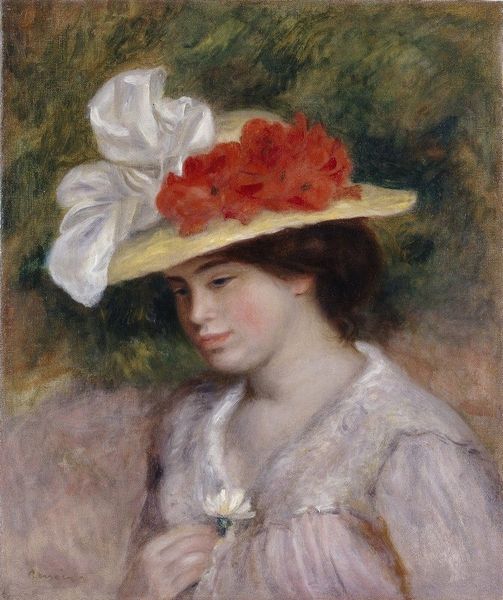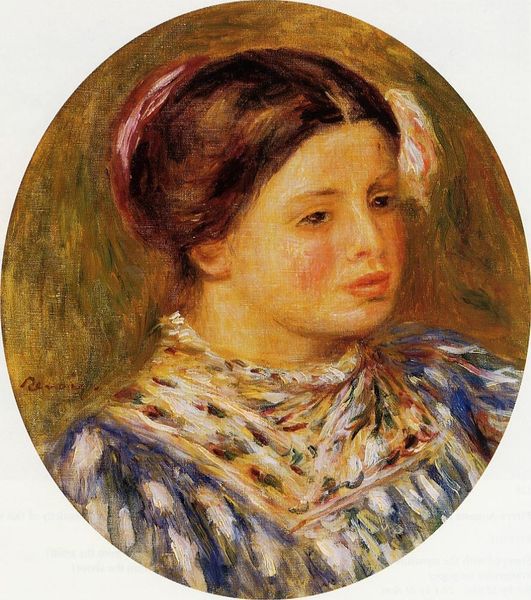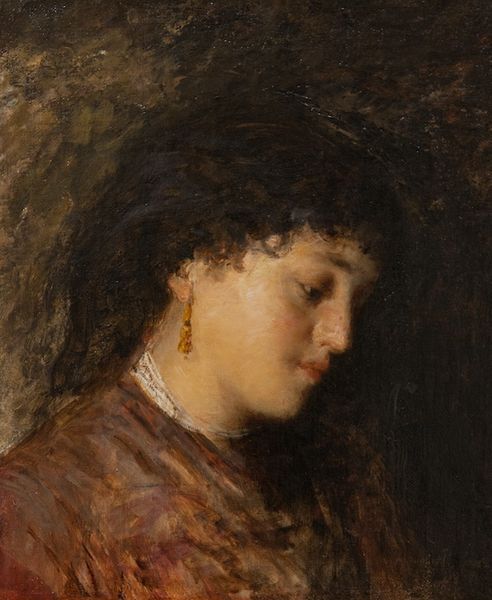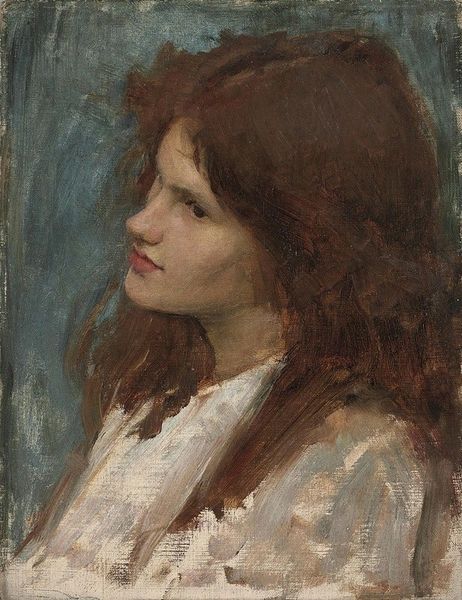
Copyright: Public Domain: Artvee
Editor: Here we have "Girl with Pearl Necklace in her Hair," an oil painting by Anton Romako, probably from around 1873 to 1876. I’m struck by the looseness of the brushstrokes, particularly around the edges of the figure. What can you tell us about Romako's artistic approach here? Curator: Note how the subject's gaze directs the eye toward an ambiguous vanishing point. The artist's employment of impasto lends a tactile quality to the work, animating the surface and emphasizing its constructed nature. Semiotically, the pearl necklace can be viewed as a signifier. Editor: A signifier of what, though? The pearls could mean a lot of things. Curator: Consider them in relation to the dark background. The painting presents binary oppositions. The contrast between light and shadow dramatizes her face. Note the subject's physical form as she contrasts against an implied atmospheric field, as well. The material is the message. Editor: That makes sense. So, looking at the interplay of these elements--texture, light, and implied narratives--we gain insight into the painting’s essence? Curator: Precisely. By isolating formal qualities we begin to decode not merely what is represented but the essence of pictorial expression itself. Through critical attention, the viewer and I are granted access to deeper artistic function and philosophical truths that underscore meaning of beauty itself. Editor: That's definitely given me a new perspective on how to appreciate Romako's style. Curator: Indeed, the synthesis of material form and philosophical reflection shapes perception itself.
Comments
No comments
Be the first to comment and join the conversation on the ultimate creative platform.
